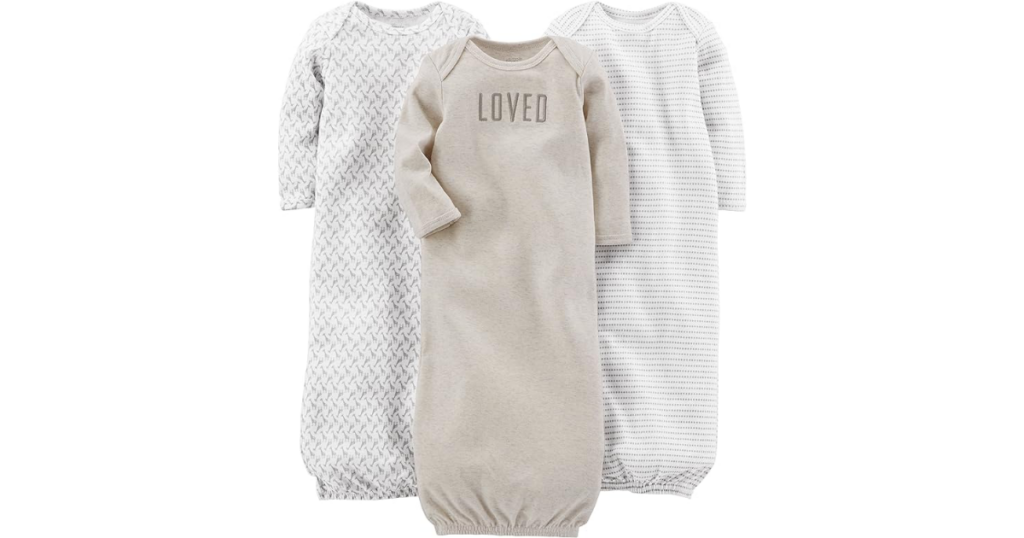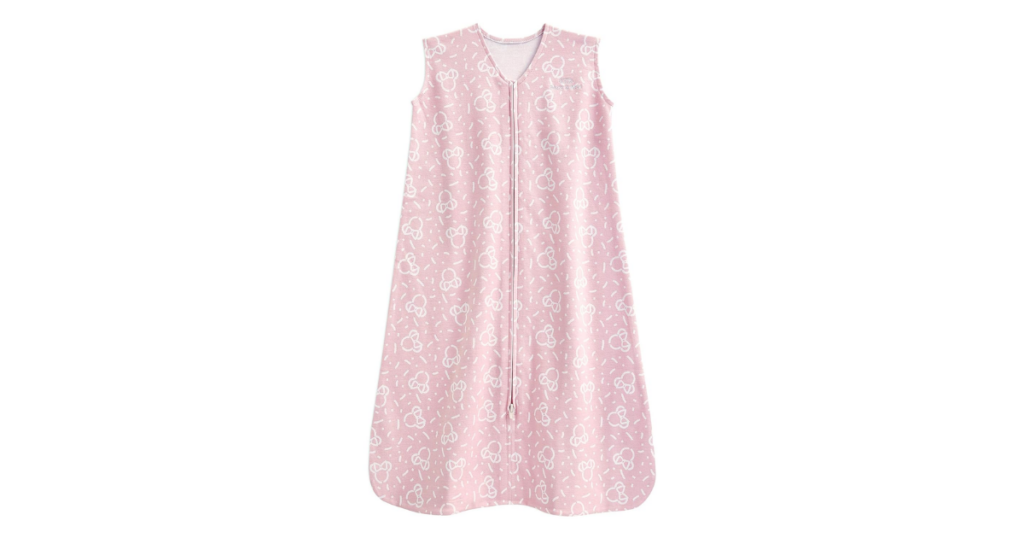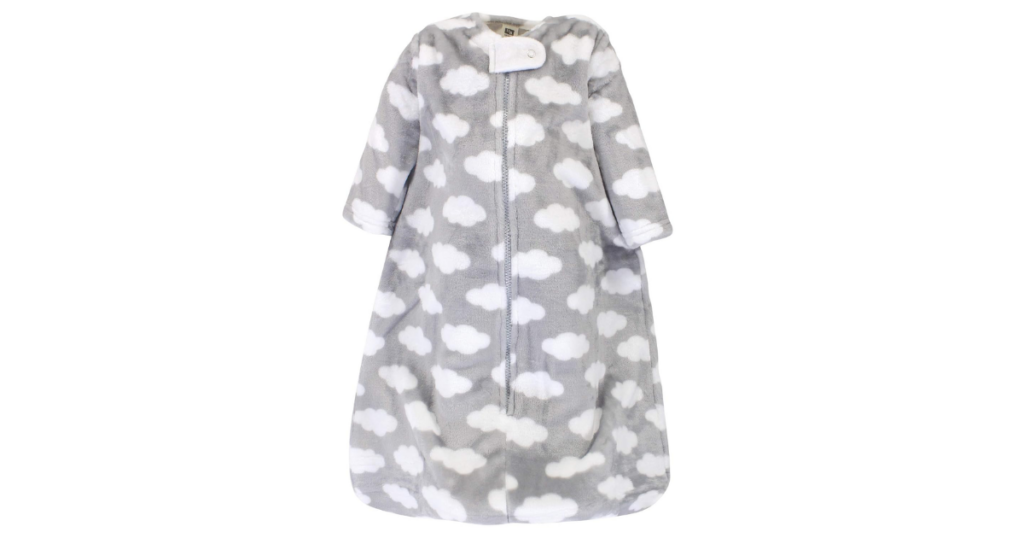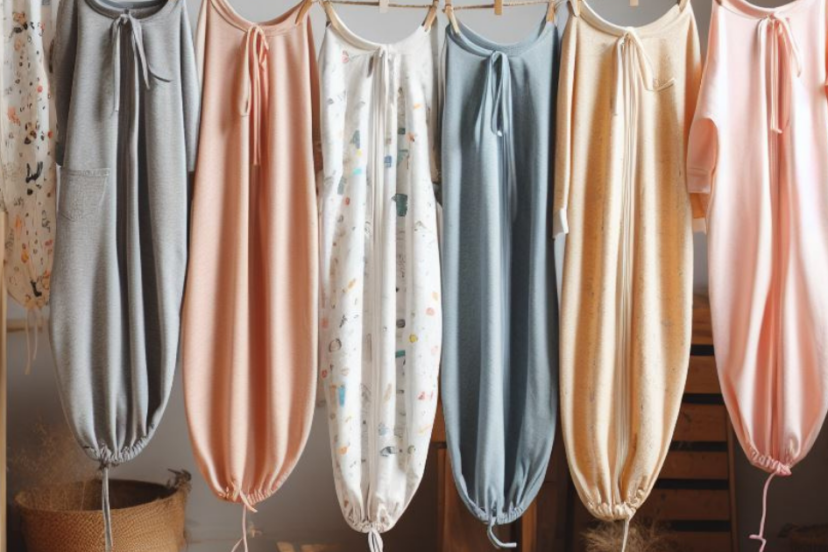Baby Sleep Sacks: Find The Perfect Bedtime Comfort
When it comes to providing your baby with a comfortable and safe sleeping environment, one essential item that should be on every parent’s radar is the baby sleep sacks. In this article, I’ll guide you through the world of baby sleep sacks, offering valuable insights, suggestions, and personal experiences.
Why I Love Baby Sleep Sacks
As a parent who’s been through the highs and lows of infant sleep, I can’t emphasize enough how these cozy little wonders have been a game-changer for my family.
Baby sleep sacks, often referred to as wearable blankets, are designed with your baby’s comfort and safety in mind. They are the modern alternative to traditional blankets and quilts, which come with safety risks like suffocation and overheating. Studies also show that Baby sleep slacks help reduce the risk of sudden infants death syndrome (SIDs).
The Importance of Choosing the Baby Sleep Sacks
Now that you know what baby sleep sacks are, let’s talk about why selecting the right one is a big deal. As a parent, I’ve learned through trial and error how crucial it is to get this choice spot-on.
1. Safety First:
The safety of your baby while they sleep is a top priority. Traditional blankets and quilts come with risks of suffocation and overheating, but sleep sacks eliminate these concerns. However, choosing the right size and type is essential to ensure your baby is snug but not restricted. A well-fitted sleep sack prevents your little one from slipping down or the fabric covering their face during the night.
2. Comfort and Sleep Quality:
Babies are notorious for wriggling out of blankets, which can lead to disrupted sleep. A proper sleep sack keeps your baby cozy throughout the night, reducing the chances of them getting cold and waking up. Quality sleep sacks are designed to help your baby sleep longer and more soundly, helps with sleep regression.
3. Ease of Use:
Unlike traditional bedding, sleep sacks are easy to put on and take off. The front zipper design makes nighttime diaper changes a breeze. Plus, there’s no need to worry about tucking in blankets or repositioning them throughout the night.
4. Seasonal Adaptability:
Babies need to maintain the right body temperature for a good night’s sleep. The season plays a significant role in selecting the right sleep sack. Light, breathable sleep sacks are perfect for summer, while thicker, warmer options are great for winter. This adaptability ensures your baby is comfortable year-round.
5. Transitioning to Crib:
If you’re moving your baby from a bassinet to a crib, a sleep sack can provide that extra layer of comfort and security. The familiar feeling of a sleep sack can help ease the transition and make your baby feel at home in their new sleeping space.
6. Peace of Mind for Parents:
Choosing the right sleep sack gives you peace of mind as a parent. You’ll sleep better, knowing your baby is secure and comfortable, and you’ve taken steps to reduce sleep-related risks.
In the next sections, we’ll explore the different types of baby sleep sacks available and delve into the specific benefits they offer. But remember, when it comes to your baby’s sleep, the right choice in sleep sacks can lead to better sleep for both you and your little one. It’s a win-win situation!
Types of Baby Sleep Sacks

Now that we understand why choosing the right sleep sack is essential, let’s explore the different types of baby sleep sacks available. As a parent who’s been down this road, I’ve had experience with both traditional sleep sacks and wearable blankets. Let’s take a closer look at each.
Traditional Sleep Sacks
What They Are: Traditional sleep sacks are sleeveless wearable bags. They provide ample room for your baby’s arms and legs to move freely, and they usually come with a zipper down the front for easy access. These are perfect for little ones who like a bit more freedom of movement during their sleep.
Why I Love Them: I found traditional sleep sacks to be excellent for my baby, especially as they grew older and started to roll over. The sleeveless design allowed for better air circulation, reducing the risk of overheating. The zipper made it easy for me to get my baby in and out of the sack during nighttime diaper changes without causing much disturbance.
Wearable Blankets
What They Are: Wearable blankets are like cozy sleeping bags for your baby. They have sleeves and zip up entirely, ensuring that your baby is snug as a bug. This design keeps your baby warm and secure, with little chance of them kicking it off during the night.
Why I Love Them: Wearable blankets were a lifesaver during colder months. They eliminated the need for additional layers, which can be cumbersome and lead to overheating. These cozy blankets were perfect for providing my baby with that extra warmth and comfort needed for a sound night’s sleep.
The choice between these two types of sleep sacks often depends on your baby’s preferences and the season. My advice? Have both on hand. Traditional sleep sacks for the warmer months and wearable blankets for the chilly winter nights.
In the following sections, we’ll delve deeper into the benefits of using baby sleep sacks and provide you with some tips on selecting the perfect one for your baby’s specific needs. It’s all about ensuring a comfortable, safe, and restful night’s sleep for your little one.
Benefits of Using Baby Sleep Sacks
Baby sleep sacks offer a range of benefits that go beyond just keeping your little one cozy. As a parent who’s relied on these handy sleep solutions, I can vouch for the peace of mind and comfort they provide. Let’s explore two key advantages:
Safe Sleep Practices
Why They Matter: Safety is a paramount concern when it comes to infant sleep. Traditional blankets can pose suffocation risks if they end up covering your baby’s face or if your baby wiggles out from under them. Sleep sacks eliminate these worries. When properly fitted, they ensure your baby can’t slip down or the fabric can’t cover their face.
My Experience: I can’t emphasize enough how much sleep sacks eased my anxiety about my baby’s safety while sleeping. With no loose blankets to worry about, I could rest easy knowing that my little one was secure and able to breathe freely throughout the night.
Regulating Baby’s Temperature
Why It’s Essential: Babies can’t regulate their body temperature as effectively as adults, making it vital to keep them at the right warmth level. Overheating is a common concern, as it can lead to discomfort and even sudden infant death syndrome (SIDS). Sleep sacks are designed with materials suitable for different seasons, helping to maintain the ideal temperature for your baby.
My Insight: During colder months, I found that wearable blankets kept my baby warm without the need for additional layers. In summer, the breathable design of traditional baby sleep sacks ensured my baby didn’t get too hot. The peace of mind that comes from knowing my baby was sleeping comfortably, with the right temperature, is priceless.
In the next sections, I’ll provide valuable tips for selecting the perfect baby sleep sack and how to dress your baby under it, ensuring that your little one experiences the utmost comfort while sleeping. Stay tuned for practical advice based on my personal experience as a parent.
Tips for Selecting the Perfect Baby Sleep Sacks

Choosing the right baby sleep sack is crucial for ensuring your baby’s comfort and safety during sleep. After going through various options and trials, here are some valuable tips to help you select the perfect one:
1. Size Matters:
Ensure that the sleep sack fits your baby properly. It should be snug but not too tight. An ill-fitting sack can be uncomfortable for your baby and may pose safety risks.
2. Seasonal Considerations:
Take into account the season and room temperature when choosing a sleep sack. Lightweight, breathable fabrics are ideal for summer, while thicker, warmer options are better for winter.
3. Quality Materials:
Look for sleep sacks made from high-quality, breathable materials that are gentle on your baby’s skin. Opt for options that are easy to clean and maintain.
4. Ease of Use:
Select a sleep sack with a user-friendly design. Front zippers or snaps make it convenient for nighttime diaper changes without disturbing your baby.
5. TOG Rating:
Check the TOG (Thermal Overall Grade) rating on the sleep sack. This rating indicates its warmth level. The higher the TOG, the warmer the sack.
6. Consider Your Baby’s Preferences:
Some babies prefer more freedom of movement (traditional sleep sacks), while others like the snug feeling of wearable blankets. Observe your baby’s comfort and choose accordingly.
7. Safety Features:
Look for sleep sacks with safety features like reinforced stitching, snap covers, and no loose or detachable parts.
8. Brand Reputation:
Read product reviews and consider well-established brands with a good reputation for baby safety.
9. Additional Features:
Some sleep sacks come with extras like built-in mittens or double zippers for easy dressing. These can be convenient.
10. Buy More Than One:
Having a few sleep sacks on hand can be useful, especially for those late-night changes. Plus, it helps to have options for different seasons.
By keeping these tips in mind, you’ll be well-prepared to select the perfect baby sleep sack that suits your baby’s needs and ensures a comfortable and safe night’s sleep. In the next section, I’ll guide you on how to dress your baby under the sleep sack for different seasons and situations.
How to Dress Your Baby Under the Baby Sleep Sack

Choosing the right baby sleep sack is just the beginning. Equally important is how you dress your baby underneath it. Here’s what I’ve learned about keeping your little one comfy:
Layer Wisely:
Dress your baby in light, breathable layers to suit the season. In warmer weather, a onesie or light pajamas are usually sufficient. For colder nights, consider long-sleeved onesies or footed pajamas. Avoid overdressing to prevent overheating.
TOG Rating:
Remember the TOG rating of the sleep sack I mentioned earlier? This comes in handy here. Match your baby’s clothing layers to the sack’s TOG rating. The total TOG (sleep sack + clothing) should keep your baby comfortably warm but not too hot.
Check for Comfort:
Ensure there are no rough seams, buttons, or zippers on the clothing your baby is wearing underneath. These can cause discomfort or pressure points.
Hands and Feet:
Some sleep sacks come with built-in hand mittens to keep your baby’s hands warm. For their feet, opt for socks if the sleep sack doesn’t have foot openings.
Room Temperature:
Consider the room temperature. If it’s a warmer room, your baby can wear lighter layers under the sleep sack. In cooler conditions, add an extra layer to maintain the right temperature.
Regular Checks:
During the night, feel your baby’s neck or back to check if they are too hot or too cold. This touch test helps ensure they’re comfortable.
Transitioning:
As your baby grows, you might need to adjust the clothing layers under the sleep sack. Babies who can roll over may prefer fewer layers, as they generate their body heat.
Remember, there’s no one-size-fits-all approach. Your baby’s comfort is paramount, so adjust their clothing based on their individual needs and the room temperature. By combining the right sleep sack with proper clothing, you’ll provide the perfect sleep environment for your baby. In the next section, I’ll share top-rated baby sleep sacks and why I recommend a specific one based on my experience as a parent.
Top-picks Baby Sleep Sacks
Finding the best baby sleep sack can be a daunting task with so many options on the market. To make your life easier, I’ve compiled a list of top-rated sleep sacks based on my experience and extensive research.
1: Simple Joys by Carter’s: Unisex Babies’ Cotton Sleeper Gown, Pack of 3

Description: A three-pack of long-sleeve gowns made of cuddle-ready cotton with cinched hems and playful prints.
Pros: Soft cotton fabric, cinched hems for warmth, convenient for diaper changes, playful prints, and gender-neutral.
Cons: Some users would prefer snaps or drawstrings for closure.
Reviews: Users find these gowns perfect for keeping babies warm and making diaper changes easy, praising the quality, softness, and convenience.
2: HALO SleepSack: 100% Cotton Wearable Blanket, Swaddle Transition Sleeping Bag

Description: A wearable blanket made of 100% cotton with a zipper at the bottom, promoting safe sleep and seamless transition from swaddle.
Pros: Safe sleep solution, easy diaper changes, extra length for longer use, hip-healthy, and soft cotton fabric.
Cons: None mentioned.
Reviews: Users love the reliability and safety of these sleep sacks, praising the softness, the bottom zipper, and their ability to keep babies warm and secure.
3. Hudson Baby Unisex Baby Plush Sleeping Bag, Sack, Blanket

Description: A plush sleeping bag made of 100% polyester, designed for safe sleep and warmth.
Pros: Soft and cozy fabric, easy on and off with zipper, keeps baby warm, high-quality zipper, and affordable.
Cons: Some users found the sleeveless version better.
Reviews: Parents appreciate the coziness and quality of this sleep sack, noting that it’s perfect for keeping babies warm and secure during sleep.
Remember, the best choice depends on your baby’s unique needs and the climate in your area. If you live in an area with varying seasons, you might even consider having a couple of sleep sacks from different alternatives to be well-prepared.
Top Picks guide using key criteria:

Frequently Asked Questions about Baby Sleep Sacks
1: Are Sleep Sacks Safe for Newborns?
Absolutely! Sleep sacks are designed with safety in mind. They eliminate the risk of loose blankets that can pose suffocation hazards. Just make sure to choose the right size and ensure it fits snugly.
2: What’s the Right Size for My Baby?
Sizing is crucial. A sleep sack should fit your baby well to prevent them from slipping down or the fabric covering their face. Most brands offer size charts to guide you in selecting the appropriate size based on your baby’s age and weight.
3: How to Wash and Maintain a Sleep Sack?
Most sleep sacks are machine washable, making maintenance a breeze. Follow the manufacturer’s care instructions to keep it clean and in good condition. Be sure to check for any wear and tear regularly.
4: When Should I Transition Out of a Sleep Sack?
As your baby grows and starts to roll over, it’s time to consider transitioning out of a sleep sack. Once they can do this comfortably, you might want to switch to a wearable blanket or other bedding options.
5: Can I Use a Sleep Sack in Different Seasons?
Yes, you can! Sleep sacks are designed for various seasons. Lightweight, breathable options are ideal for summer, while thicker, warmer sleep sacks keep your baby cozy during colder months. Look for sleep sacks with removable layers for added adaptability.
*We may earn a commission from purchases made through our links, at no cost to you. This does not affect our product recommendations. Please see our disclosure to learn more.




